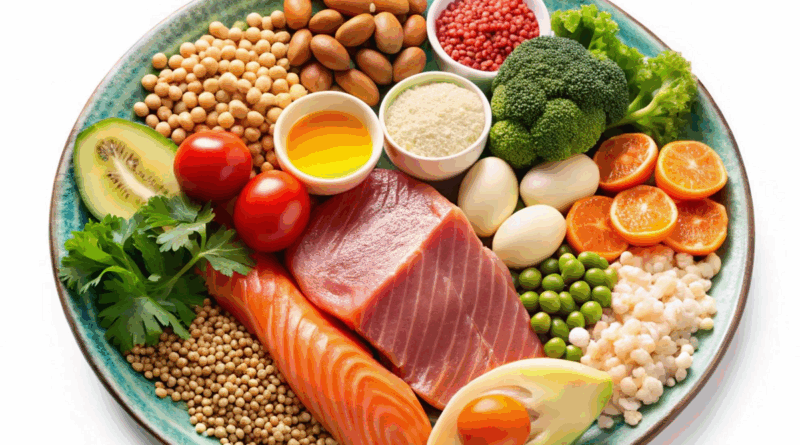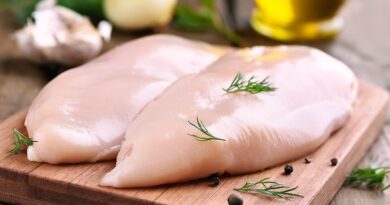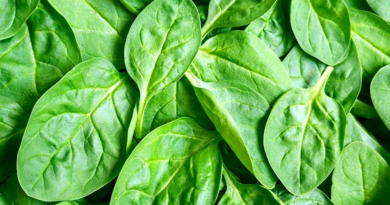Balanced Diet Guide 2025: Build a Healthy Plate Every Day
What if every bite you took today nudged you toward sharper focus, stronger immunity, and steadier energy? A balanced diet makes it the everyday norm, not the exception. Yet more than half of the world’s population still falls short on key vitamins and minerals, despite unprecedented food choice availability.
Grab a mug of water (hydration counts!) and let’s build your healthiest plate.
Table of Contents
1. What Exactly Is a Balanced Diet?
A balanced diet supplies all essential macronutrients (carbohydrate, protein, fat) and micronutrients (vitamins, minerals, phytonutrients) in amounts that maintain energy balance and prevent deficiency or excess. In practical terms, it means:
| Food Group | Typical Daily Share | Why It Matters |
| Vegetables & fruit | ½ of every plate | Fiber, antioxidants, lower chronic-disease risk |
| Whole grains | ¼ plate | Steady fuel, B-vitamins, gut health |
| Lean protein | ¼ plate | Repair, satiety, and immune function |
| Healthy fats | Small dollop or drizzle | Hormone production, fat-soluble vitamins |
| Water & unsweetened drinks | Primary beverage | Metabolism, cognition |
The proportions match Harvard’s Healthy Eating Plate, a research-driven tool now used in 25+ languages. (Healthy Eating Plate – The Nutrition Source)
2. Why Prioritise a Balanced Diet in 2025?
- Chronic disease shield. Unhealthy diet plus inactivity remains a top global risk for diabetes, heart disease, stroke, and certain cancers. ( Healthy diet )
- Micronutrient crisis. Recent modelling shows inadequate intakes for calcium (66 %), iron (65 %), iodine (68 %,) and vitamin E (67 %). (Billions worldwide consume inadequate levels of micronutrients critical to human health | Harvard T.H. Chan School of Public Health)
- Updated fat & carb rules. WHO’s 2023 guidance caps saturated fat at <10 % of calories and trans-fat at <1 %. ( WHO updates guidelines on fats and carbohydrates )
- Produce power. Adults should aim for ≥400 g of vegetables and fruit and 25 g of naturally occurring dietary fibre daily. (WHO updates guidelines on fats and carbohydrates)
- Food-as-medicine momentum. U.S. healthcare systems are now writing “produce prescriptions” because nutrition is more cost-effective than many drugs. (Prescriptions for Healthy Food? What to Know About the ‘Food Is Medicine’ Movement)
3. The Five Core Food Groups—How Much You Really Need
3.1 Vegetables & Fruit
- Fill half your plate, focus on colour variety.
- Frozen and canned (rinse to lower salt) are nutritionally close to fresh—use them to control cost spikes.
3.2 Whole Grains
Think intact kernels: oats, brown rice, quinoa, whole-wheat roti, millet. They deliver slower-release carbs than refined options and extra magnesium and zinc.
3.3 Protein Choices
Aim for 1–1.6 g per kg body weight. Mix animal (fish, poultry, eggs, dairy) and plant (beans, lentils, tofu, nuts). Limit red meat to <350 g cooked weight weekly.
3.4 Healthy Fats
Drizzle olive, canola, mustard, or ground-nut oil. Keep total fat around 30 % of energy; make most of it unsaturated. ( WHO updates guidelines on fats and carbohydrates )
3.5 Hydration
Thirst often masquerades as hunger. Target 35 ml/kg (about 2.5 L for a 70 kg adult), more in hot climates or intense training.
4. Macronutrient Decoder—Quality Over Quantity
| Macro | % of Energy | Quality Rule of Thumb |
| Carbohydrate | 45–60 % | ≥65 % from whole grains, legumes, veg & fruit |
| Protein | 15–25 % | Choose lean, diversify sources |
| Fat | ≤30 % | Prioritise MUFAs & PUFAs; keep trans-fat near zero |
Remember: foods rarely carry just one macronutrient. Nuts include protein and fat; legumes supply carbs and protein.
5. Micronutrients People Miss
| At-Risk Nutrient | Why It Drops Off | Fix-It Foods (per serving) |
| Calcium | Dairy avoidance, ageing | Yogurt, fortified plant milk, sesame seeds |
| Iron | Menstruation, low meat | Lentils, chickpeas, lean beef + vitamin C source |
| Vitamin D | Indoor lifestyle | minutes of sun, salmon, fortified milk |
| Iodine | Non-iodised salt, vegan | Iodised salt, nori, dairy |
| Folate | Low veg intake | Spinach, beans, avocado |
More than half the population lacks two or more of these. (Billions worldwide consume inadequate levels of micronutrients critical to human health | Harvard T.H. Chan School of Public Health)
6. Portion Sizes Made Simple—the Plate Method
Visual > arithmetic. Place a 9-inch (23 cm) plate in front of you and:
- Cover half with mixed veggies + fruit.
- Fill one quarter with whole grains or starchy veggies.
- Fill one quarter with protein.
- Add a thumb-sized portion of healthy oil or a small handful of nuts/seeds.
This approach has outperformed calorie-tracking apps for weight-loss adherence in recent trials. (Quality counts.) (Healthy Eating Plate – The Nutrition Source)
7. Life-Stage Tweaks
7.1 Kids & Teens
- Growth spurts demand ~0.95 g protein/kg.
- Calcium needs peak at 1,300 mg/day (ages 9–18).
- Keep sugary drinks <1 can/week—liquid calories add up fast.
7.2 Adults (19–49)
- Focus on fibre (≥25–30 g).
- Balance screen time with 150 minutes/week of moderate activity.
7.3 Pregnancy & Breastfeeding
Folate (600 µg), iron (27 mg), and choline (450 mg) jump in priority; a prenatal multivitamin plus DHA is recommended. (Nutrition During Pregnancy | ACOG)
7.4 Older Adults (50+)
Protein uptake declines; aim for 1.2 g/kg with each meal providing ≥25 g. Mediterranean-style patterns support cognition and cardiovascular health. (By 2024, the 65-and-over age group will outnumber the youth group.)
8. Dietary Patterns That Hit Balanced-Diet Criteria
| Pattern | Key Features | Ideal For |
| Mediterranean | Olive oil, fish, legumes, and herbs | Longevity, heart health (meta-analysis 2024). (Mediterranean Diet and Cardiometabolic Biomarkers in Children …) |
| DASH | Low-sodium, potassium-rich, focused on BP | Hypertension management |
| Vegetarian/Vegan | Plant proteins + B-12 source | Ethical, environmental goals |
| Low-GI Indian | Millets, pulses, curd, spices | Type-2 diabetes risk reduction |
All align with USDA or WHO quality principles when planned correctly. (USDA Dietary Patterns | Food and Nutrition Service)
9. Practical Meal-Planning Framework
9.1 Grocery Blueprint (2-Week Rotation)
- Base: brown rice, oats, whole-wheat pasta/roti flour, quinoa
- Proteins: canned beans, eggs, frozen fish fillets, tofu, Greek yogurt, peanuts
- Veg & fruit: seasonal fresh + frozen mixed veg, leafy greens, berries
- Healthy fats: extra-virgin olive oil, flaxseed, mixed nuts
- Flavour: herbs, garlic, turmeric, chili, vinegar
9.2 7-Day Sample Menu (≈2,000 kcal/day)
Day 1
Breakfast—Overnight oats with berries & chia
Lunch—Quinoa-black-bean salad, avocado-lime dressing
Snack—Apple + 2 tbsp peanut butter
Dinner—Grilled salmon, steamed broccoli, sweet-potato mash
(Repeat template with protein and veg swaps through Day 7)
Each day hits ≥25 g fibre, 100 g protein, <7 g added sugar.
10. Balanced Eating on a Budget
- Use the Thrifty Food Plan formulas. USDA shows a nutritious basket can be met at four cost levels; the Thrifty Plan was fully updated in 2021 to reflect real prices. (USDA Food Plans | Food and Nutrition Service)
- Buy produce “in season” or frozen. Nutrient loss is minimal, price savings can be 30 – 50 %.
- Batch-cook staples. A pot of lentils costs cents per serving and freezes well.
- Compare unit prices, not shelf prices. Larger bags of oats often halve your cost per gram.
11. Troubleshooting Common Roadblocks
| Roadblock | Try This |
| “Healthy food is too expensive.” | Plan around pulses, frozen veg, eggs; use sales flyers; cook large batches. |
| Sugar cravings | Shift breakfast to high-protein + fibre (e.g., veggie omelette). |
| Low energy in the afternoon | Replace refined-grain lunch with mixed-grain + legumes; hydrate. |
| Dining out often | Apply the plate method to menu choices; ask for dressings on the side. |
12. Frequently Asked Questions
- Is a balanced diet the same as calorie counting?
No. Portion visuals keep quality front-and-centre without obsessive math. - Can I be a vegetarian and still get complete protein?
Yes—combine legumes with grains or add soy/tofu/tempeh. - Do I need supplements?
Most nutrients can be met via food, but vitamin D, B-12 (for vegans), and DHA during pregnancy often require supplementation. - Does intermittent fasting fit a balanced diet?
It’s a timing tool. Quality of food still matters; apply the plate method within your eating window. - How many cheat meals can I have?
Reframe: aim for 85 % nutrient-dense choices. Occasional treats fit when the routine is solid. - Is fruit sugar “bad”?
Whole fruit comes packaged with fibre and polyphenols—keep at 2–3 servings/day. - Are plant-based meats healthy?
Check labels: many are high in sodium and refined oils. Use in moderation. - What about coffee?
Up to 3–4 cups plain coffee or tea count toward hydration; limit sugar and syrups. - How can kids accept veggies?
Offer repeatedly, model intake, and involve them in prep—preference forms over time. - Can I drink alcohol on a balanced diet?
Ideally <2 serves/day for men, <1 for women, with alcohol-free days each week. Quality calories first.
13. Key Takeaways
- Balance = quality + proportion + variety.
- Half-plate produce is the fastest health upgrade most people can make.
- Tailor protein, calcium, and iron intakes to life stage, especially for pregnancy and older age.
- Budget constraints are solvable with legumes, grains, and seasonal or frozen produce.
- Consistency beats perfection—aim for 85 % adherence.
References
- World Health Organization. “Healthy Diet—Fact Sheet.” Updated 2020. ( Healthy diet )
- Harvard T.H. Chan School of Public Health. “Healthy Eating Plate.” Accessed May 2025. (Healthy Eating Plate – The Nutrition Source)
- World Health Organization. “WHO Updates Guidelines on Fats and Carbohydrates.” July 17, 2023. ( WHO updates guidelines on fats and carbohydrates )
- World Health Organization. “Carbohydrate Intake Guidance (≥ 400 g produce, 25 g fibre).” Departmental Update 2023. (WHO updates guidelines on fats and carbohydrates)
- Passarelli S. et al. “Global Estimation of Dietary Micronutrient Inadequacies.” Lancet Global Health, Aug 29 2024. (Billions worldwide consume inadequate levels of micronutrients critical to human health | Harvard T.H. Chan School of Public Health)
- American College of Obstetricians and Gynecologists. “Nutrition During Pregnancy.” FAQ, updated 2024. (Nutrition During Pregnancy | ACOG)
- WHO Europe. “Fulfilling Longevity: Advice for Older Adults.” Oct 11, 2023. (By 2024, the 65-and-over age group will outnumber the youth group)
- USDA Food & Nutrition Service. “USDA Dietary Patterns—Appendix 3, DGA 2020-2025.” Accessed 2025. (USDA Dietary Patterns | Food and Nutrition Service)
- USDA Food & Nutrition Service. “Thrifty Food Plan 2021 & Monthly Cost Updates.” Accessed 2025. (USDA Food Plans | Food and Nutrition Service)
- Time Magazine. “Prescriptions for Healthy Food? The ‘Food Is Medicine’ Movement.” Aug 2024. (Prescriptions for Healthy Food? What to Know About the ‘Food Is Medicine’ Movement)
- PubMed ID 38995643. “Mediterranean Diet and Cardiometabolic Biomarkers in Children.” 2024. (Mediterranean Diet and Cardiometabolic Biomarkers in Children …)
Ready to put these principles on your plate? Pick one change—swapping half your refined grains for whole—and start today. Consistency, not complexity, wins the balanced-diet game.




